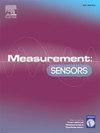Comparative analysis of inertial measurement units and markerless video motion capture systems for assessing rotational parameters in snowboard freestyle
Q4 Engineering
引用次数: 0
Abstract
In snowboard freestyle, the measured amount of rotation (mAR) is a key judging criteria. Rotational parameters like angular velocity (AV) support athletes and coaches in performance enhancements. This study evaluates the validity of on-snow available inertial measurement unit (IMU) data with a markerless optical tracking system. Eight elite snowboard riders performed 88 tricks with a bounce board on a trampoline that were concurrently measured using a board-mounted IMU and a video motion capture system (criterion). The validity of the IMU was determined for discrete (mAR) and time-series (AV) data via t-test, effect size (d), concordance correlation coefficient (CCC), standard deviation of differences (SDD), and bias ±limits of agreement (LoA). For discrete data, results indicated excellent absolute and relative concurrent validity of mAR (SDD = ±8.18°; SDD% = ±1.42%; CCC = 0.998; bias ± LoA = 1.80° ± 16.02°) despite significant mean differences (p 0.05; d ) between both systems. For time-series data, acceptable absolute and relative concurrent validity exist for AV (mean SDD 45°; mean SDD% 10%; mean CCC 0.9; bias ± LoA = −0.19°/s ± 87.48°/s) showing significant mean differences only in the first 1% of the time-series (p 0.05; d ). In conclusion, using a board-mounted IMU is a valid approach to measure rotational parameters in snowboard freestyle, highlighting IMUs’ potential for on-field performance analysis. Nonetheless, caution is advised when interpreting AV at individual time points due to the observed variability, especially in close temporal proximity to take-off and landing events.
求助全文
约1分钟内获得全文
求助全文
来源期刊

Measurement Sensors
Engineering-Industrial and Manufacturing Engineering
CiteScore
3.10
自引率
0.00%
发文量
184
审稿时长
56 days
 求助内容:
求助内容: 应助结果提醒方式:
应助结果提醒方式:


